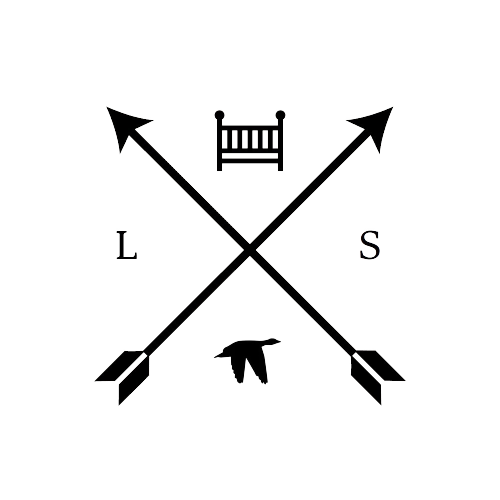A good night's sleep is a priceless commodity in today's fast-paced world. Among the many elements that contribute to a comfortable rest, the humble duvet stands out as a popular and essential bedding item. Despite being a common household item, the origins of duvets are shrouded in mystery for many. Let’s delve deep into the history of duvets and trace their evolution from ancient times to the modern bedroom, highlighting how they've become an indispensable part of our sleeping experience.
The Roots of Duvets: Ancient China and Viking Age
The history of the duvet can be traced back to ancient China, approximately 3,000 years ago. The Chinese recognized the insulating properties of feathers and down, and used these materials to create their version of the duvet, called "chou."
The chou was typically filled with silk floss, making it a luxury item reserved for the wealthy and powerful. The Chinese emperors and their families would sleep under these warm, comfortable quilts, which were a symbol of their status and power.
Meanwhile, in the frigid lands of Northern Europe, the Vikings were also using a similar bedding item called the "huldre." As with the Chinese chou, the huldre was a type of quilt that utilized the natural insulating properties of bird feathers and down.
The huldre was an essential item for the Vikings, as it provided warmth and comfort during the harsh winters. Archaeological findings from Viking burial sites have revealed the presence of these feather-filled quilts, which were often adorned with intricate embroidery.
Cross-Cultural Exchange and the Spread of Duvets
The Crusades in the 11th to 13th centuries played a significant role in spreading the concept of duvets throughout Europe.
As European knights and soldiers traveled to the Middle East, they were exposed to the comfortable and luxurious bedding used by their Eastern counterparts. Upon returning home, they brought back the idea of using feather-filled quilts, which eventually became popular among European nobility.
The Renaissance and the Rise of the Eiderdown
As time went on, duvets began to spread across Europe. During the Renaissance, the term "eiderdown" emerged, referring to the soft down feathers of the eider duck. These feathers were highly prized for their exceptional insulating properties, and eiderdown quilts became the bedding of choice for European nobility.
In the 18th century, the popularity of the eiderdown grew as it became more accessible to the general population. The industrial revolution led to the production of affordable cotton and linen fabrics, which were used to make duvet covers.
This allowed people from all walks of life to experience the warmth and comfort of a down-filled duvet. Innovations in weaving and printing technologies also contributed to the production of colorful and intricately designed duvet covers, making them an attractive and functional addition to any bedroom.
The Modern Duvet: A Household Essential
The duvet as we know it today became widespread in Europe during the mid-20th century. A notable event in the duvet's evolution was when Sir Terence Conran, a British designer and entrepreneur, introduced the duvet to the UK market in the 1960s. Conran saw the potential of the duvet as an easy-to-use, versatile bedding option that could replace traditional blankets and sheets.
The modern duvet is made up of a quilted bag filled with a variety of materials, such as down, feathers, wool, or synthetic fibers. The comforter is typically encased in a removable cover, which can be easily washed and changed. This practical and low-maintenance
design has made the duvet a staple in bedrooms around the world. The duvet's versatile nature allows for customization based on individual preferences and needs, with options like varying levels of warmth and hypoallergenic materials.
As awareness about the importance of sleep hygiene and the role of bedding in ensuring a good night's sleep has grown, so too has the demand for high-quality duvets. Today, consumers can choose from a wide range of duvet materials, including eco-friendly and sustainable options like bamboo, organic cotton, and lyocell.
The modern duvet is not limited to cold climates or winter months. Lightweight duvets are now available for warmer climates and seasons, ensuring that everyone can enjoy the comfort of a duvet year-round. Advances in technology have also led to the development of temperature-regulating down comforters that help maintain an optimal sleeping environment by absorbing and releasing heat as needed.
The Global Appeal of Duvets
The duvet's widespread adoption can be attributed to its undeniable comfort and versatility. Today, duvets are used in various forms around the world, such as the Japanese kakebuton, the Indian razai, and the Russian pododeyalnik. These international variations highlight the universal appeal of the duvet and its ability to adapt to different cultural preferences and needs.
What can you make of this article?
From the mighty Viking huldre to the modern-day bedding marvels, the duvet has captured the hearts and minds of people across all cultures and generations. It is a symbol of rest and rejuvenation, a comforting embrace that wraps us in its warm embrace and lulls us into a deep slumber. So, whether you're a history buff or a sleep enthusiast, the duvet's captivating journey is sure to keep you spellbound.
For centuries, this humble bedding accessory has been a vital part of our sleep experience, providing unparalleled warmth and comfort to millions of people worldwide.
The duvet has truly stood the test of time, adapting and evolving with us as our understanding of sleep hygiene grows and new technological advances emerge. Its enduring popularity is a testament to our primal desire for coziness, warmth, and the sheer pleasure of a peaceful night's sleep.

